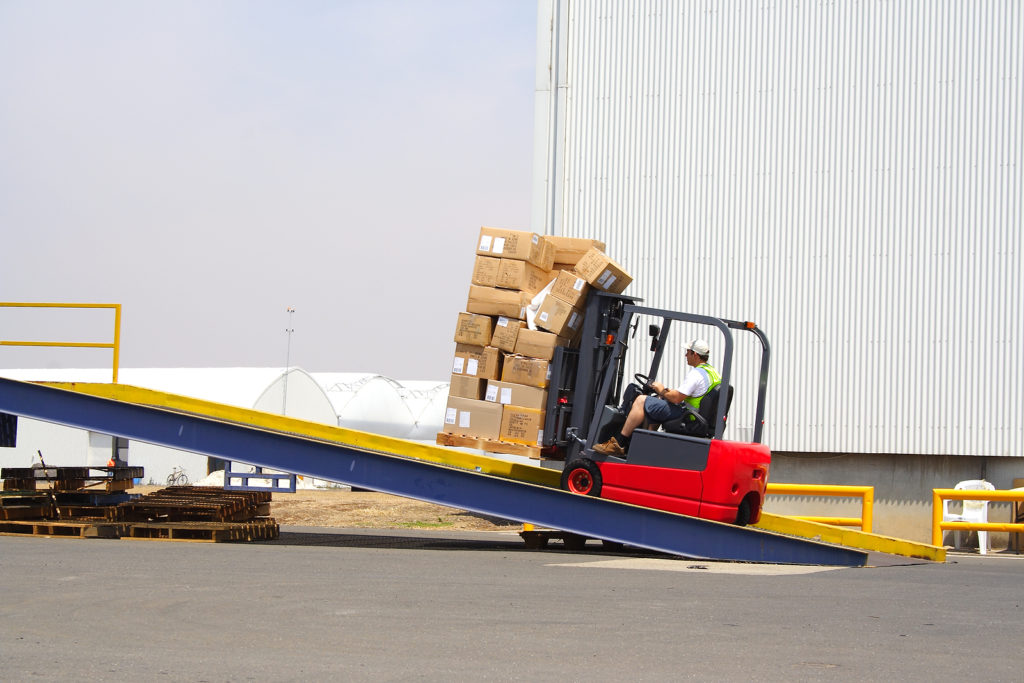Operating Forklifts on Slopes: What You Need to Know
You’ve probably heard the term “slippery slope.” For forklift drivers, that’s not just a figure of speech. Driving a lift up or down any uneven surface — even if it doesn’t seem that steep — is one of the major reasons that people end up in an accident.
What Is a Slope?
A slope or ramp incline has an angle that exceeds 10°. Driving a forklift on an incline may seem simple. But, once a forklift operator begins to move their vehicle up or down a slope, myriad problems may arise.
For instance, if a forklift operator drives their vehicle too close to the edge of a ramp, there is a risk of a tip-over. Or, if a forklift operator looks away from the direction of travel while going up or down a ramp, the risk of an accident increases accordingly.
A Closer Look at OSHA Guidelines for Operating a Forklift on a Slope
OSHA has specific guidelines for operating forklifts on slopes. For another viewpoint, a forklift firm in Australia recently did some research as to how forklift drivers should proceed when driving on slopes, small hills and other tricky terrain types.
What did the firm discover? It found out that taking a forklift up or down a slope can lead to an accident if the operator is going the wrong way.
The aforementioned scenario is a common cause of forklift accidents. Slopes can make a forklift’s load to slide off, which can cause the lift to run the fallen load over. Plus, slopes can make a lift tip over forward, so the back wheels lift up. Other hazards include locked front wheels and spinning wheels, as both of these can cause a forklift spinning out of control.
Tips for Operating a Forklift on an Incline
To properly operate a forklift on an incline, a driver must:
- Keep their eyes on the road at all times
- Stay a safe distance from the edge of a ramp
- Ensure the forks point downward
A forklift certification training class offers tips and recommendations to help forklift operators safely navigate inclines. It also provides insights into how to travel down a ramp with a loaded forklift.
How to Drive a Forklift Down a Ramp
To safely drive a forklift down a ramp, a lift operator must:
- Remain alert and focus on the task at hand
- Watch for traffic, bystanders, and potential hazards in front of the forklift
- Avoid turns
- Maintain a safe distance from the edge
- Drive slowly and cautiously
Along with these tips, a forklift operator should never leave their vehicle on a ramp. Instead, a forklift should be kept at ground level; otherwise, the lift may inadvertently move down a ramp, which can lead to an accident.
Forklift Slope Driving Tips
If you have to go up or down a slope, always do the following:
- Drive the forklift straight up or down the slope
- Avoid steep slopes
- Make sure the load always points uphill
- When going down a slope, be careful about the load falling off
- Always drive with a lift “forks first” down a hill or slope (this puts more weight on the braking wheels, so the driver has more traction)
Handling slopes on the job can also be easier with proper warnings and cautions. If you’re on your company’s safety team, or know someone who is, take a few minutes to address certain slopes. A warning sign or painted yellow pavement can help a forklift driver identify hazardous areas.
Another way to stay safe on the job is to use ForkliftCertification.com training. We can help make your company OSHA compliant quickly and affordably. Talk to our training specialists today — you can call FLC at (888) 278-8896, or visit our contact page for more information.

